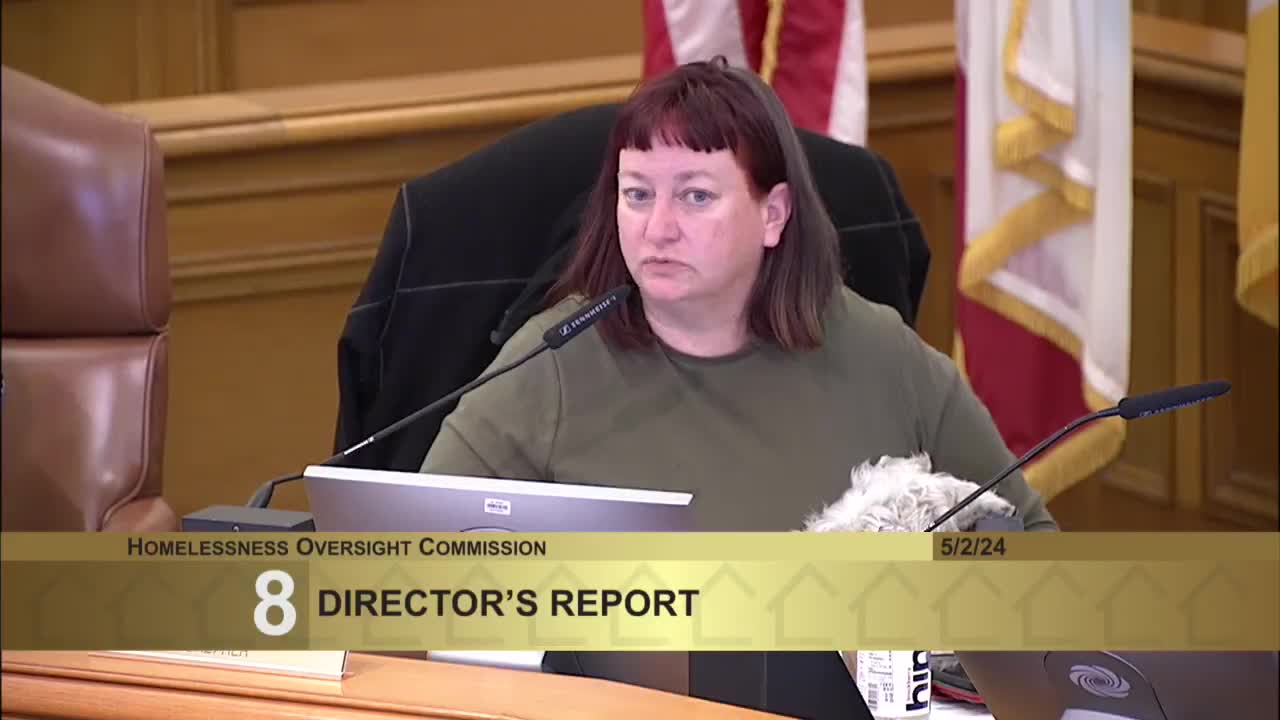San Francisco officials discuss outreach and safe parking solutions for RV residents
May 02, 2024 | San Francisco City, San Francisco County, California

This article was created by AI summarizing key points discussed. AI makes mistakes, so for full details and context, please refer to the video of the full meeting. Please report any errors so we can fix them. Report an error »

In a recent meeting held at San Francisco City Hall, city officials engaged in a thorough discussion about pressing issues surrounding homelessness and the management of vehicular housing. The atmosphere was charged with urgency as officials sought to address the needs of individuals living in RVs and other vehicles, many of whom are facing precarious living situations.
One of the key points raised was the need for enhanced outreach to those living in RVs. Officials expressed concern that some individuals are going to great lengths to remain in their current locations, potentially putting themselves at risk. There was a consensus on the importance of connecting these individuals with trusted resources to help them navigate their challenging circumstances.
The conversation shifted to the city's plans for safe parking sites, which have been in discussion for several months. Officials confirmed that outreach efforts would be ramped up before enforcement begins, with signs expected to go up soon. However, challenges remain in securing suitable locations for these sites. One proposed site has passed initial assessments but is limited in capacity, while another larger site is facing community pushback. The urgency to find a solution was palpable, as officials noted the increasing number of vehicles—approximately 40—currently occupying the area.
The meeting also touched on the financial aspects of the city's homelessness initiatives, particularly the costs associated with the newly proposed mission cabins. Officials clarified that the nearly $7 million investment was funded through various sources, including the general fund, and emphasized the importance of evaluating the long-term viability of such investments. The lifespan of these cabins, which are intended to provide temporary shelter, was a focal point of discussion, with officials acknowledging the complexities involved in assessing their durability and potential for relocation.
As the meeting progressed, the topic of shelter exit data emerged, highlighting the city's efforts to track the outcomes of individuals transitioning from shelters to permanent housing. Officials reported a significant increase in successful housing placements, with over 3,600 individuals housed in the past year. This data is crucial for understanding the effectiveness of current strategies and ensuring that resources are allocated efficiently.
In conclusion, the meeting underscored the city's commitment to addressing homelessness through proactive outreach, strategic planning for safe parking, and careful financial management. As San Francisco grapples with the challenges of vehicular housing, officials remain focused on finding solutions that prioritize the safety and well-being of its most vulnerable residents. The discussions reflect a broader national conversation about homelessness, as cities across the country seek to implement best practices and innovative solutions to this pressing issue.
One of the key points raised was the need for enhanced outreach to those living in RVs. Officials expressed concern that some individuals are going to great lengths to remain in their current locations, potentially putting themselves at risk. There was a consensus on the importance of connecting these individuals with trusted resources to help them navigate their challenging circumstances.
The conversation shifted to the city's plans for safe parking sites, which have been in discussion for several months. Officials confirmed that outreach efforts would be ramped up before enforcement begins, with signs expected to go up soon. However, challenges remain in securing suitable locations for these sites. One proposed site has passed initial assessments but is limited in capacity, while another larger site is facing community pushback. The urgency to find a solution was palpable, as officials noted the increasing number of vehicles—approximately 40—currently occupying the area.
The meeting also touched on the financial aspects of the city's homelessness initiatives, particularly the costs associated with the newly proposed mission cabins. Officials clarified that the nearly $7 million investment was funded through various sources, including the general fund, and emphasized the importance of evaluating the long-term viability of such investments. The lifespan of these cabins, which are intended to provide temporary shelter, was a focal point of discussion, with officials acknowledging the complexities involved in assessing their durability and potential for relocation.
As the meeting progressed, the topic of shelter exit data emerged, highlighting the city's efforts to track the outcomes of individuals transitioning from shelters to permanent housing. Officials reported a significant increase in successful housing placements, with over 3,600 individuals housed in the past year. This data is crucial for understanding the effectiveness of current strategies and ensuring that resources are allocated efficiently.
In conclusion, the meeting underscored the city's commitment to addressing homelessness through proactive outreach, strategic planning for safe parking, and careful financial management. As San Francisco grapples with the challenges of vehicular housing, officials remain focused on finding solutions that prioritize the safety and well-being of its most vulnerable residents. The discussions reflect a broader national conversation about homelessness, as cities across the country seek to implement best practices and innovative solutions to this pressing issue.
View full meeting
This article is based on a recent meeting—watch the full video and explore the complete transcript for deeper insights into the discussion.
View full meeting
